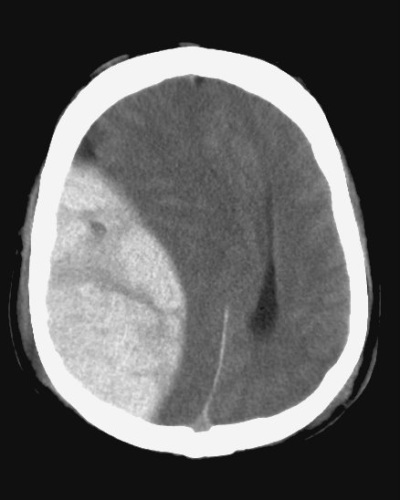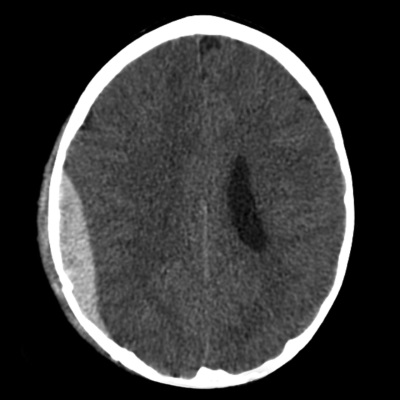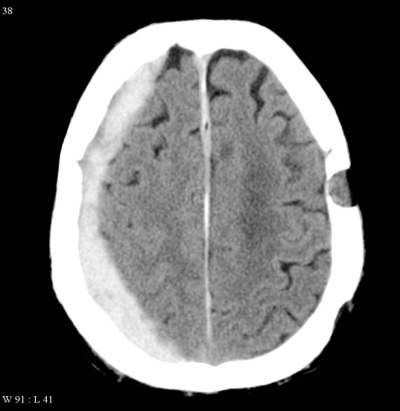Head injury: types of traumatic brain injury
Basics
Image gallery
Extradural (epidural) haematoma:
Subdural haematoma:
Subarachnoid haemorrhage:
- primary brain injury may be focal (contusion/haematoma) or diffuse (diffuse axonal injury)
- diffuse axonal injury occurs as a result of mechanical shearing following deceleration, causing disruption and tearing of axons
- intra-cranial haematomas can be extradural, subdural or intracerebral, while contusions may occur adjacent to (coup) or contralateral (contre-coup) to the side of impact
- secondary brain injury occurs when cerebral oedema, ischaemia, infection, tonsillar or tentorial herniation exacerbates the original injury. The normal cerebral auto regulatory processes are disrupted following trauma rendering the brain more susceptible to blood flow changes and hypoxia
- the Cushings reflex (hypertension and bradycardia) often occurs late and is usually a pre terminal event
| Type of injury | Notes |
|---|---|
| Extradural (epidural) haematoma | Bleeding into the space between the dura mater and the skull. Often results from acceleration-deceleration trauma or a blow to the side of the head. The majority of epidural haematomas occur in the temporal region where skull fractures cause a rupture of the middle meningeal artery. Features
|
| Subdural haematoma | Bleeding into the outermost meningeal layer. Most commonly occur around the frontal and parietal lobes. Risk factors include old age, alcoholism and anticoagulation. Slower onset of symptoms than a epidural haematoma. |
| Subarachnoid haemorrhage | Usually occurs spontaneously in the context of a ruptured cerebral aneurysm but may be seen in association with other injuries when a patient has sustained a traumatic brain injury |
Image gallery
Extradural (epidural) haematoma:
 | |
| © Image used on license from Radiopaedia |  |
 | |
| © Image used on license from Radiopaedia |  |
 | |
| © Image used on license from Radiopaedia |  |
Subdural haematoma:
 | |
| © Image used on license from Radiopaedia |  |
 | |
| © Image used on license from Radiopaedia |  |
Subarachnoid haemorrhage:
 | |
| © Image used on license from Radiopaedia |  |
 | |
| © Image used on license from Radiopaedia |  |
